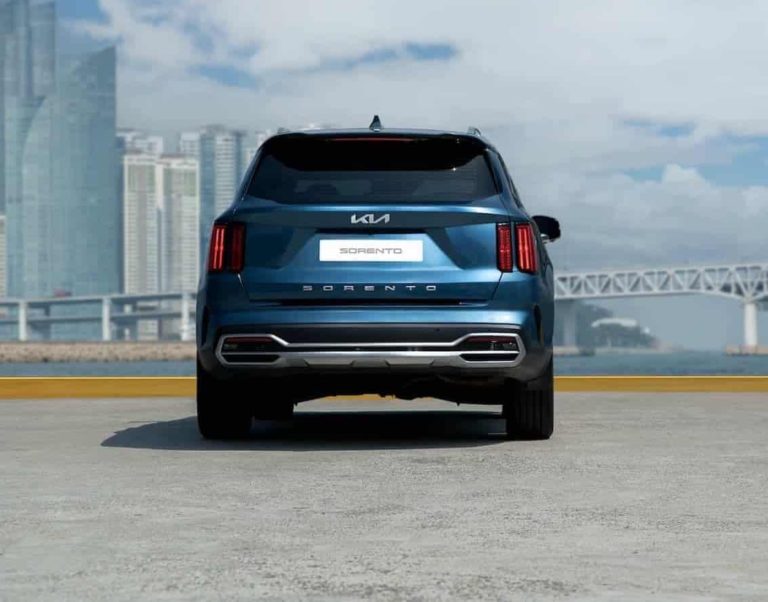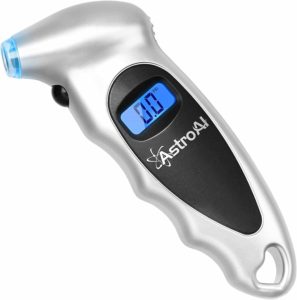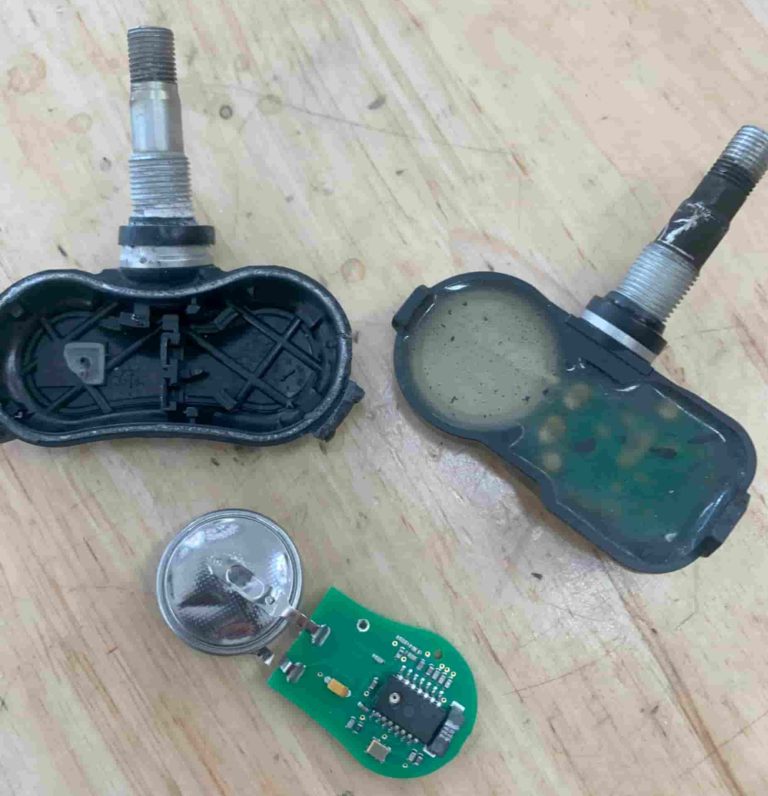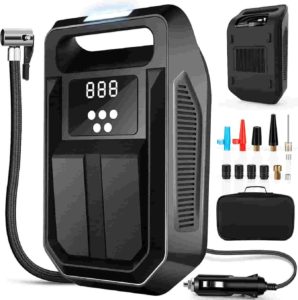Understanding the Importance of the Tire Pressure Monitoring System
Welcome to the road less traveled in vehicle maintenance – the unseen world of tire pressure monitoring. Dive into this comprehensive guide that uncovers the nitty-gritty of your Kia Sorento’s Tire Pressure Monitoring System (TPMS). Here, you’ll find an in-depth look at how this seemingly insignificant system can supercharge your vehicle’s performance, safety, and fuel efficiency. Pack your curiosity as we navigate common TPMS issues, and maintenance tips, and why this unassuming facet of your ride could be the unsung hero of your vehicle’s longevity and health. Buckle up, it’s going to be an enlightening ride!
What is the Kia Sorento Tire Pressure Light
The tire pressure light in your Kia Sorento, often symbolized as a tire surrounding an exclamation mark, is more than just an indicator. It’s an unsung hero nestled amidst the dashboard’s array of warning signals. This tiny beacon springs to life when your tire pressure deviates from its optimal range. It’s not just a light—it’s a safety net protecting you, your vehicle, and those on the road around you.
How Does the Kia Sorento TPMS Work?
Here’s a detailed explanation of how the TPMS works:
Sensor Placement and Communication: Each tire (including the spare tire in some models) of the Kia Sorento is fitted with a tire pressure sensor. This sensor is attached to the base of each valve stem.
Data Collection: Each sensor measures the air pressure inside its respective tire. Sensors also gather additional information such as tire temperature, which can influence tire pressure.
Data Transmission: The sensors communicate wirelessly using radio frequencies, transmitting the data they have collected to the TPMS control module (or receiver) in the vehicle. This is done at regular intervals or if a significant change in pressure is detected.
Data Analysis: The TPMS control module analyzes the data received from each sensor. It compares the measured air pressure against the preset optimal (or ‘baseline’) pressure levels. These baseline levels are set by Kia and can usually be found in the vehicle’s manual or on a sticker inside the driver’s side door.
Indicator Light: If the TPMS control module determines that the pressure in one or more of the tires is too low (typically 25% below the baseline), it will trigger the TPMS warning light on the vehicle’s dashboard (the yellow exclamation mark). This is a signal to the driver that they should check and adjust their tire pressure.
Remember, while the TPMS is an effective tool for maintaining optimal tire pressure, it should not replace regular manual checks with a tire pressure gauge.
Why Does the Kia Sorento Tire Pressure Light Come On?
The illumination of the tire pressure monitoring system light in the Kia Sorento might be due to a number of different factors, each indicating possible problems that need to be addressed. Below is a detailed list of potential triggers:
Common Reasons for the Kia Sorento TPMS Coming on
Seasonal temperature changes: A drop in ambient temperature can cause tire pressure to decrease, triggering the warning light.
Tire puncture or leak: A sharp object or road debris like a nail or screw may puncture a tire, causing air loss which will of course activate the warning light.
Faulty tire pressure sensor: Damaged or malfunctioning sensors may provide inaccurate readings, resulting in a false alert. The only way to determine which sensor is faulty is to scan each sensor with a TPMS diagnostic tool.
Valve stem issues: A damaged or leaking valve stem can lead to gradual pressure loss and eventual activation of the tire pressure light. They make kits to replace the rubber gasket that usually goes bad.
Tire damage: Impact from potholes or hitting a curb can cause structural damage like tire bubbles, leading to pressure loss.
Sensor battery life: TPMS sensors are battery-powered, and over time, batteries die. (they usually last anywhere from 5-10 years) This will cause the tire pressure light to turn on. Again, you must use a diagnostic tool to determine which sensor is dead or dying.
Recent tire rotation or replacement: If the tires have been recently rotated or replaced, the TPMS may need recalibration to avoid false alerts. The vehicle’s computer may think the front tires are in the rear and rear in the front after a rotation.
Wheel issues: Damaged, corroded, or cracked wheels can lead to air leaks and pressure loss. This is very common with low profile tires.
Altitude changes: Climbing or descending in elevation can affect tire air pressure and trigger the TPMS warning. An additional 1.5 Psi per Km above sea level is required.
Natural pressure loss: Tires lose air pressure over time due to temperature changes and permeation. Tire dry-rot will happen to tires that sit.
Electrical problems or software issues within the car’s TPMS system. Occasionally the system may have a software update from Kia.
Snow Tires: If you have a separate pair of wheels for your snow tires, you can either transfer the sensors from your summer wheels or acquire an additional set of 4 sensors for the second pair of wheels. However, if you are using the same wheels for both sets of tires, there is no need to be concerned about this.
How to Reset the Kia Sorento Tire Pressure Light
The Kia Sorento does not have a tire pressure reset button.
When the tire pressure light on the dashboard lights up, pull over and check your tire pressure.
Determine which tire is causing the tire pressure light to turn on and adjust the tire pressures accordingly.
Fill your tire to the exact recommended pressures. 35 Psi. I cannot emphasize enough, be as EXACT as possible.
Drive your Kia. Drive for a few minutes at speeds over 20 Mph.
If the light doesn’t go off right away, re-check your air pressure to make sure they are all at the exact pressure you set them to. If they are not at the same pressure, you probably have some sort of tire leak.
2023 Kia Sorento Tire Pressure
TIRE SIZE | FRONT PSI | REAR PSI |
235/65R17 | 35 | 35 |
235/60R18 | 35 | 35 |
255/45R20 | 35 | 35 |
SPARE | 60 | 60 |
What Tools Do You Need to Reset the Kia Sorento TPMS?
All you need is an accurate tire pressure gauge. TPMS tools become necessary for the Sorento only when the system encounters an issue that needs troubleshooting. For instance, if there’s a TPMS malfunction and you need to identify which tire sensor is defective, a TPMS diagnostic tool becomes necessary. Similarly, a TPMS tool will be needed if you have to replace a sensor and it needs to be registered and relearned to the Sorento’s computer.
Troubleshooting the Kia Sorento Tire Pressure Light
There are a few things you can try if the TPMS light won’t reset:
Re-check all your tires to make sure they are all at the exact pressure you set them to. If any pressure has decreased, you likely have some kind of leak.
If the pressures are at the exact pressure you set them to and the light still won’t go off, try waking up your sensors.
You can either release air from the tire or overfill the tire.
We recommend filling your problem tire with 45 Psi. With the tire overfilled, drive the car again. This will turn off the tire light.
Now that the tire light is off, readjust the pressure back to the recommended 35 Psi.
If the tire pressure light blinks or flashes before staying on, it indicates that your tire pressure system is malfunctioning.
There are only 3 possible reasons your tire pressure light won’t reset: a leak in the tire, valve stem or bead seal. A malfunction or faulty tire pressure sensor. Or an issue with the TPMS receiver module. (TPMS receiver modules usually do not go bad)
Reset the Entire System
If you’ve tried every available solution and the tire light still refuses to reset, consider disconnecting the main 12-volt battery. Remove the negative terminal first to avoid any short circuits (you’ll need a 10 or 12mm wrench or socket to loosen the terminal). This will cut off power to the ECU (engine control unit), erasing all the error codes logged by the computer, including the tire pressure light. Disconnecting the battery will also erase the computer’s adaptive memory settings. This means that after you reconnect the battery terminals, your Sorento might need to go through a “relearning” process. During this stage, the vehicle reconfigures all its sensors and actuators. To complete the relearn process, drive the Sorento for 30 minutes or more at 50 Mph.
How to Install and Calibrate New Pressure Sensors
The installation and calibration of new TPMS sensors is a 5 step procedure, often executed during tire replacements. Here’s a step-by-step walkthrough:
The procedure begins with removing the tire from the wheel, which allows for the careful removal of the old sensor. Typically, the base of the old sensor is loosened with a screw and removed, followed by the valve stem being pulled out through the top of the wheel. After removing the old sensor, it’s time to install the new one. Make sure your new sensor is compatible with Kia’s TPMS. To install the new sensor, use a valve removal tool to pull the valve through the valve hole in the wheel. Once you’ve installed the new sensor and remounted the tire back onto the wheel, the next step is to register the new sensor to the vehicle’s Electronic Control Unit (ECU). This process is known as the TPMS “relearning” process. During this phase, the ECU is programmed with the unique ID number of the new sensor, enabling it to receive signals from the newly installed device. We recommend taking a photograph of each new sensor’s ID number prior to installation, as these numbers may be needed for reference and once you put the tire back on the wheel you won’t be able to see the sensor anymore. This phase of the process requires a TPMS relearning tool. You’ll need to scan each of the tire pressure sensors, and then enable the tool to synchronize with the vehicle’s ECU. This is usually done by plugging the TPMS tool into the OBD 2 port under the steering wheel.
Common Issues with the Kia Sorento TPMS
Sensor Batteries
Tire pressure sensor batteries are the power sources found within the Tire Pressure Monitoring System (TPMS) sensors. These batteries provide the energy needed for the sensors to measure the air pressure, temperature, and other data, as well as to wirelessly transmit this information to the vehicle’s TPMS control module. The batteries are sealed within the sensor units and aren’t designed to be replaced. Instead, when the battery life ends (usually after around 5-10 years), the entire sensor unit has to be replaced. It’s important to note that a weak or dead battery can cause the TPMS to malfunction, often triggering a flashing warning light on the vehicle’s dashboard.
How to Find the Leak in a Tire
Start by checking the pressure in each tire and figure out which tire is low on air. Next, grab a spray bottle and fill it with a mixture of soap and water (windex works too). Generously spray the entire tire, ensuring that you cover the bead (the area where the tire and wheel meet) and the valve stem. Soak every inch of the tire, inside and out. Wait a few seconds and inspect the entire tire for small bubbles. If air is escaping from a tire that has been coated in soapy water, the leak will manifest as tiny bubbles originating from the puncture point. Use a flashlight to spot the bubbles easier.
TPMS Malfunction Indicator
The Kia Sorento’s tire pressure monitoring system has a malfunction indicator to alert you when something is wrong with the system itself. The indicator uses the same yellow exclamation point as the low tire pressure light. The difference is that, if there is a problem with the system, the light will flash for approximately one minute before staying on. The flashing will happen every time you start your Sorento until the problem is fixed. When your tire light is flashing your Sorento will not be able to give you accurate pressure readings. Basically, a blinking tire pressure light means there is a malfunction within the TPMS itself, rather than an air pressure issue.
Why is the TPMS Malfunctioning?
Using non Kia wheels or tires.
Electronics emitting similar radio signals can occasionally disrupt the functioning of the TPMS. This disturbance could originate from various sources such as walkie-talkies, radios, or even the alarm system of a nearby store.
If your Sorento has highly tinted windows, it could possibly interfere with the radio signals being exchanged between the TPMS sensors and the receiver.
If there is substantial snow or ice on or around the tire valves
If the tire pressure is extremely high.
If wheels without tire pressure sensors are installed on the car. (such as driving with the spare tire)
If new tire pressure sensors are installed without registering the new sensor IDs with the Sorento’s receiver module/ECU the vehicle will not recognize them.
Are Tire Plugs Safe?
Absolutely. I’ve personally plugged thousands of tires and have had very few issues. Tire plugs are a reliable method for repairing punctures located in the tread area of a tire. They are designed to be injected directly into the puncture caused by objects like a nail or screw, effectively sealing the puncture from any air leakage. (It goes without saying that the puncturing object must be removed first.) Constructed from robust rubber-like materials, tire plugs are designed to endure the demanding conditions within a tire, including changes in pressure and temperature. If correctly installed, a tire plug can maintain its function for the remaining lifespan of the tire without necessitating a replacement. However, tire plugs should not be used on the sidewall of a tire.
How to Check Your Kia Sorento Air Pressure
Make sure the tires are cold. If your vehicle has been driven, wait at least three hours before checking the tire pressure.
Remove the valve cap from the tire.
Press the tip of the tire pressure gauge onto the valve and read the pressure.
If the tire pressure is below the recommended level, fill the tire with air until the recommended 35 Psi is reached. If the tire pressure is above 35 Psi, release air until it’s at 35 Psi.(Press the metal stem in the center of the tire valve to let air out. You can use any object like a screwdriver to do this. Be gentle.)
After adjusting the tire pressure, don’t forget to put the valve caps back on to prevent leaks and keep dirt and moisture out.
Repeat this process for each tire, including the spare if applicable.
Maintaining Optimal Tire Pressure in Your Kia Sorento
Does the Weather Affect Tire Pressure?
Weather conditions can significantly influence the tire pressure in your Kia Sorento. Typically, colder temperatures lead to a decrease in tire pressure because air contracts when it’s cold, reducing the air volume inside the tire. Conversely, warmer temperatures cause the air to expand, potentially increasing the tire pressure. For every drop of 10 degrees Fahrenheit, tire pressure tends to decrease by about 1 PSI (Pound per Square Inch), and vice versa. Therefore, it’s crucial to regularly check your tire pressure during seasonal changes and temperature swings to maintain optimal tire pressure and ensure safe and efficient vehicle performance.
What is "Cold Tire Pressure"?
“Cold” tire pressure refers to the air pressure in your tires when they’ve been inactive for several hours, allowing them to cool down. This is typically in the early morning or after your car has been parked for a prolonged period. It’s important to take tire pressure readings when the tires are “cold” because as you drive your vehicle the tires heat up, leading to an expansion of the air inside them and consequently, inflated pressure readings. If you adjust your tire pressure based on these heightened readings, you could inadvertently overinflate your tires. Therefore, for the most accurate measurement it’s recommended to check your tire pressure when the tires are “cold”.
Is it Safe to Drive The Kia Sorento With Low Tire Pressure?
While it might be safe to drive your Sorento for a short time with the TPMS light on, it’s crucial to address the issue right away. Driving with incorrect tire pressure can lead to significant complications. We recommend figuring out the cause of the problem. Is it a slow leak, or is there a nail or screw lodged in the tire? Is there a leak at the bead seal? Is the tire losing air quickly or slowly? Diagnosing the problem, understanding the risks involved, and taking immediate corrective action is paramount. Always remember, safety should never be compromised!
Are Tire Sealants Safe?
While tire sealants may provide a quick temporary remedy for a flat tire on your Kia Sorento, (particularly during an urgent situation) they are not a long-term solution. It’s worth noting that these products may inflict damage on your TPMS sensors, as the sealant has the potential to clog or obstruct the sensor. Furthermore, they will ruin the tire, making it unrepairable and unfit for plugging. Sealants can also upset the balance of the tire, leading to vibrations while driving. We generally advise against the use of any type of tire sealant unless it’s your only option. However, if you do opt to use one, it’s recommended that you take your vehicle to a tire repair center for a proper fix ASAP!
Conclusion
In conclusion, the TPMS of your Kia Sorento plays a critical role in ensuring the optimal performance and safety of your vehicle, alerting you to underinflated or overinflated tires, and potential tire damage. Its effectiveness, however, does not absolve you from the responsibility of regular manual checks with a tire pressure gauge. TPMS light activation can be triggered by various factors from seasonal temperature changes to faulty sensors. To maintain and troubleshoot the system, be aware of the common causes of TPMS light activation, familiarize yourself with the process to reset the tire pressure light, and know how to diagnose system malfunctions. The key to avoiding major tire and vehicle problems is understanding, checking, and maintaining the right tire pressure, supplemented by the technological aid of your Kia Sorento’s TPMS. Remember, a vigilant driver is a safe driver. Everything in this article is applicable to all Kia Sorento Models and trims, including the Kia Sorento Hybrid.
Please note that this blog post contains Amazon affiliate links. This means that if you make a purchase through one of these links, we at TPMSRESET.com may earn a small commission at no extra cost to you. We only recommend products that we personally use and believe in. Thank you for supporting us.





